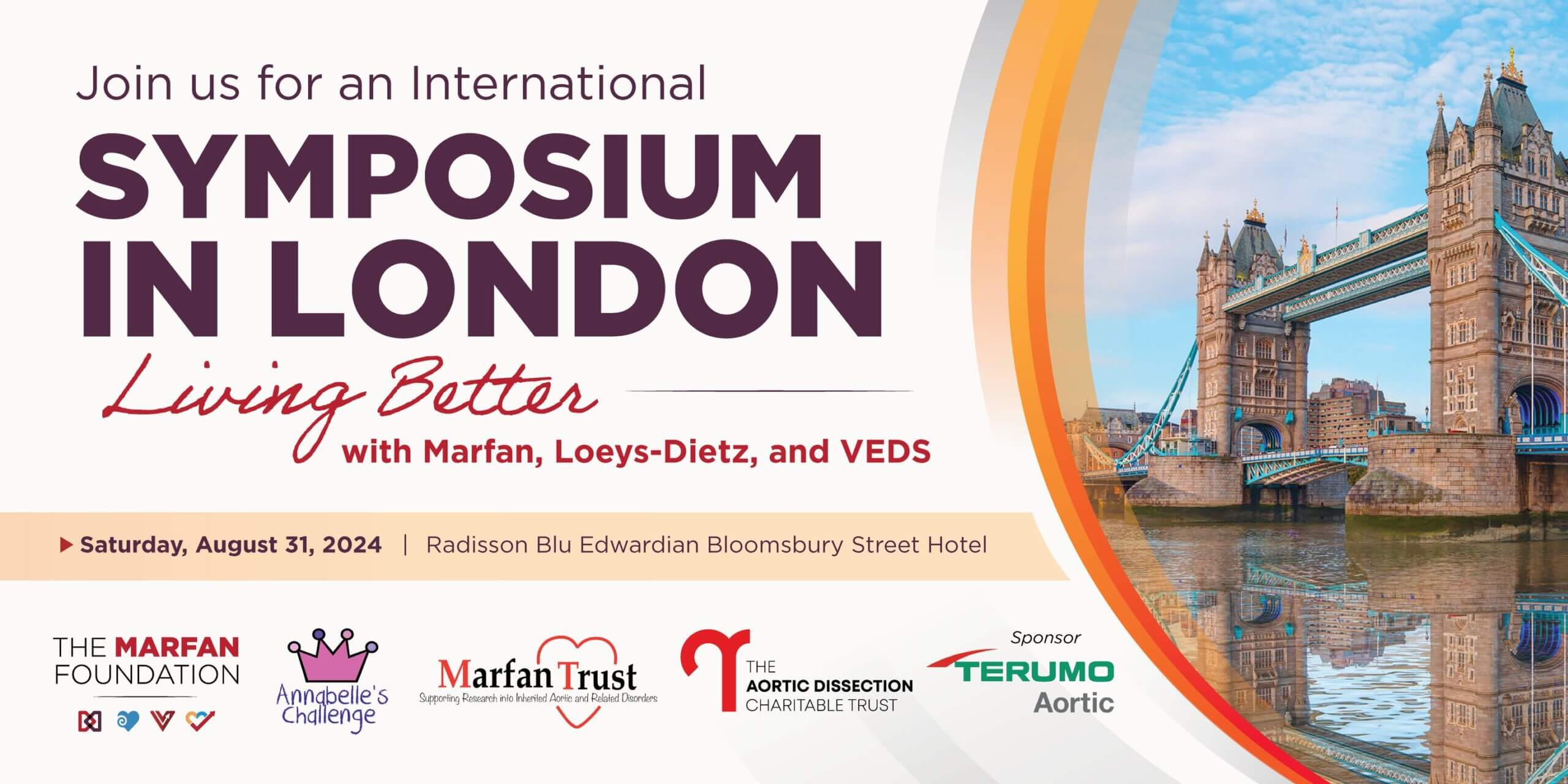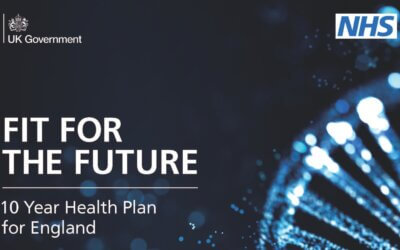On the eve of Aortic Dissection Awareness Month, London became the epicentre of global advocacy and education for individuals affected by genetic aortic and vascular conditions. The Marfan International Patient Symposium, hosted by the Marfan Foundation in collaboration with the Marfan Trust, the Aortic Dissection Charitable Trust, Annabelle’s Challenge and sponsored by Terumo Aortic, brought together patients, families, and leading experts from around the world. The event was a testament to the power of community and advocacy in shaping the future of healthcare for those living with Marfan syndrome, Loeys-Dietz syndrome and Vascular Ehlers-Danlos syndrome (VEDS).
Unveiling the Latest Medical Insights
The symposium was meticulously crafted to provide a wealth of information on the diagnosis, treatment, and management of these complex conditions. Attendees were treated to presentations from some of the most respected names in the field, including Dr Nitha Naqvi and Professor Christoph Nienaber from the Royal Brompton Hospital, aawell as Dr Sherene Shalhub from the University of Washington. Their sessions delved into the intricacies of genetic aortic and vascular conditions, offering cutting-edge insights that will significantly improve patient outcomes.
Dr Alex Pitcher, a consultant cardiologist at John Radcliffe Hospital and Professor Tonia Vincent from the University of Oxford were also integral to the event’s success. Their contributions emphasised the importance of multidisciplinary care and the need for continuous research and innovation in treating these rare disorders. The speakers translated complex medical knowledge into practical, actionable advice that patients and their families could understand and use in their daily lives.
Building a Community of Support and Understanding
Among the most popular and well-attended sessions were those focused on patient-friendly and lifestyle topics, which resonated deeply with attendees. These sessions included essential subjects like Ageing Well with a Connective Tissue Disorder, Cardiac and Aortic Emergencies, and Living with a Genetic Condition, which offered invaluable insights into maintaining health and well-being across different life stages, making them indispensable resources for participants.
One of the most striking aspects of the symposium was its focus on fostering a sense of community among attendees. The organisers recognised that living with a rare genetic condition can often be isolating, and they made it a priority to create an environment where participants could connect with others who share similar experiences. This communal aspect was a core component of the event, reinforcing the idea that mental health and emotional support are as crucial as medical treatment in managing these lifelong conditions.
Specialised sessions were held for different age groups, ensuring that everyone, from children to adults, received the attention and support they needed. These sessions were tailored to address the unique challenges faced by each demographic, making the symposium a truly inclusive event.
An Inspiring Presentation on Advocacy
One highlight of the symposium was the powerful presentation by Catherine Fowler, a trustee of the Aortic Dissection Charitable Trust. Her talk on advocacy was deeply inspiring, providing a roadmap for how to effect meaningful change in the healthcare system.
Catherine began by defining what advocacy truly means. She emphasised that it is not merely about making noise or agitating for change without direction. Instead, effective advocacy involves identifying a cause, believing in it, and then mobilising others to support that cause through thoughtful, sustained effort. Her presentation was a clear call for patients and families to take an active role in their healthcare, urging them to speak out, listen and propose better options for themselves and others in similar situations.
Advocacy in Action: Real-world Examples
Catherine provided compelling examples of advocacy in action, particularly highlighting the work that TADCT has done to improve care for aortic dissection patients in the UK & Ireland. One of the most significant achievements has been placing aortic dissection firmly on the parliamentary agenda. Through persistent lobbying, TADCT succeeded in securing the development of a standardised pathway for diagnosis and long-term follow-up, a monumental step forward for patient care.
Moreover, Catherine discussed the pivotal role of advocacy in the creation and implementation of the NHS England Acute Aortic Dissection Toolkit. This toolkit, designed in collaboration with healthcare professionals and patient advocates, represents a critical resource for improving the immediate and long-term care of aortic dissection patients. The involvement of TADCT in its rollout, particularly in amplifying patient voices and addressing service design issues, showcases the power of patient-led advocacy in driving systemic change.
The Future of Advocacy: Catherine’s Call to Action
Catherine’s presentation was not just about past successes; it was a forward-looking blueprint for future advocacy efforts. She outlined the essential qualities of an effective advocate, from understanding the change one wants to see to being persistent and holding people accountable. Her advice was both practical and motivational, encouraging attendees not to be deterred by setbacks but to continue pushing for better outcomes, no matter how long it takes.
Her top ten tips for advocates were particularly well-received, offering valuable guidance to those in the room who might be new to advocacy or looking to refine their approach. Among these tips, the importance of building a coalition and using social pressure stood out as key strategies for achieving long-lasting change.
Catherine’s advocacy tips offered invaluable guidance for those seeking to make a real difference in the world of genetic aortic and vascular conditions. First and foremost, she stressed the importance of understanding the change you want to achieve. Clarity of purpose is essential, as it allows advocates to focus their efforts and communicate their goals effectively. Catherine also urged attendees not to wait for the perfect moment but to take action now, stressing that timing is often a critical factor in driving progress.
Her advice to be genuine and creative highlighted the need for authenticity and innovation in advocacy. Building trust and finding unique ways to address challenges can make all the difference in achieving success. Additionally, Catherine encouraged advocates to be persistent, urging them to not take no for an answer and, importantly, to hold people accountable even when they agree to support a cause. Advocacy is a long-term commitment, and investing for the long haul is crucial. By building coalitions and leveraging social pressure, advocates can amplify their impact, ensuring that their voices are heard and their goals realised. Catherine’s final and perhaps most powerful piece of advice was simple: don’t give up! Perseverance, even in the face of setbacks, is the key to creating lasting change.
A Catalyst for Change
This Patient Symposium provided attendees with the knowledge, tools and inspiration needed to improve their own lives and the lives of others in the community. The symposium highlighted the critical role of advocacy in transforming healthcare for individuals with Marfan syndrome, Loeys-Dietz syndrome and VEDS.
As the attendees left the symposium, they did so with a renewed sense of purpose and a stronger connection to a community that is as committed as they are to making a difference. This event was a shining example of what can be achieved when knowledge, passion and advocacy come together for a common cause.





